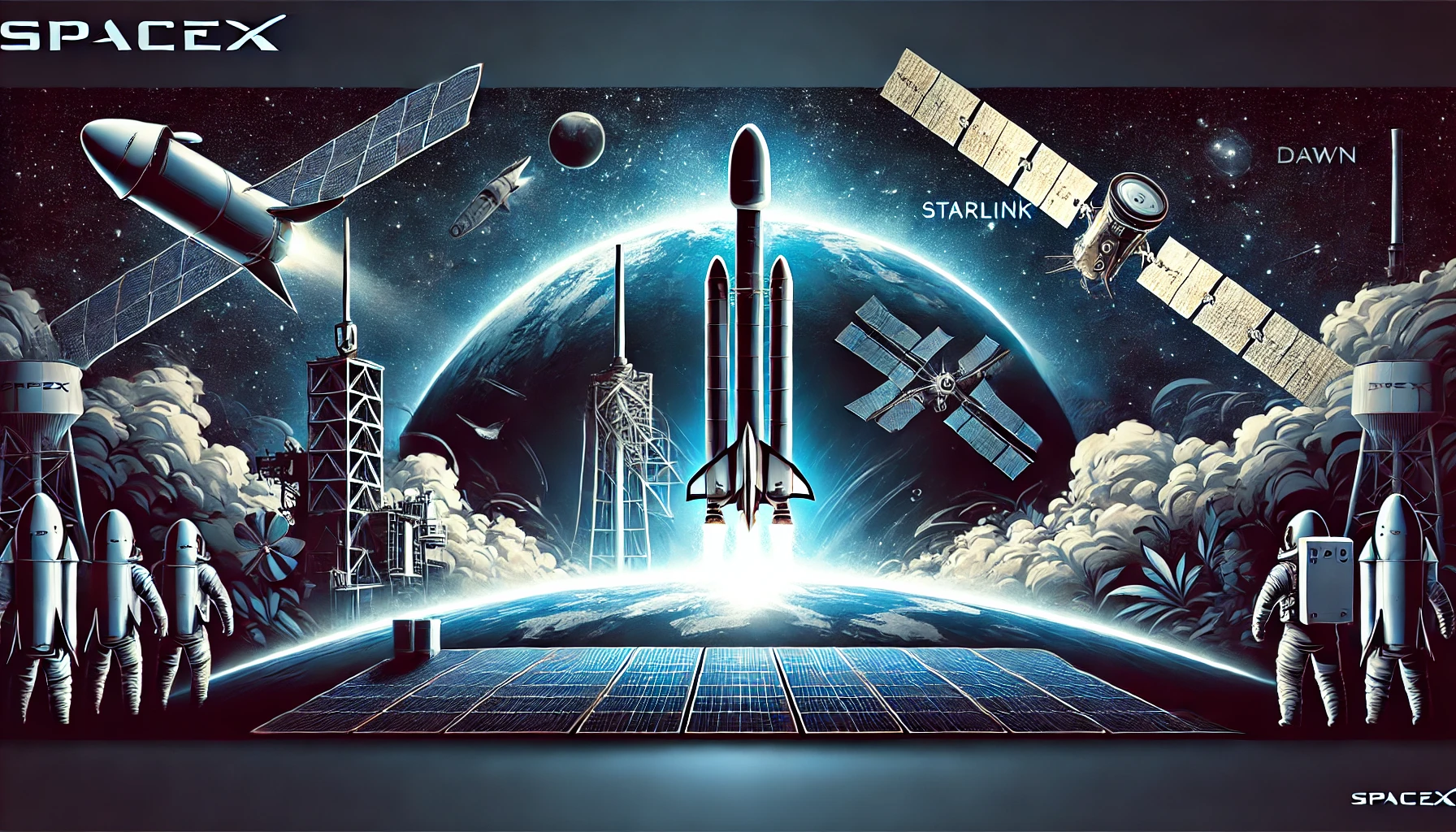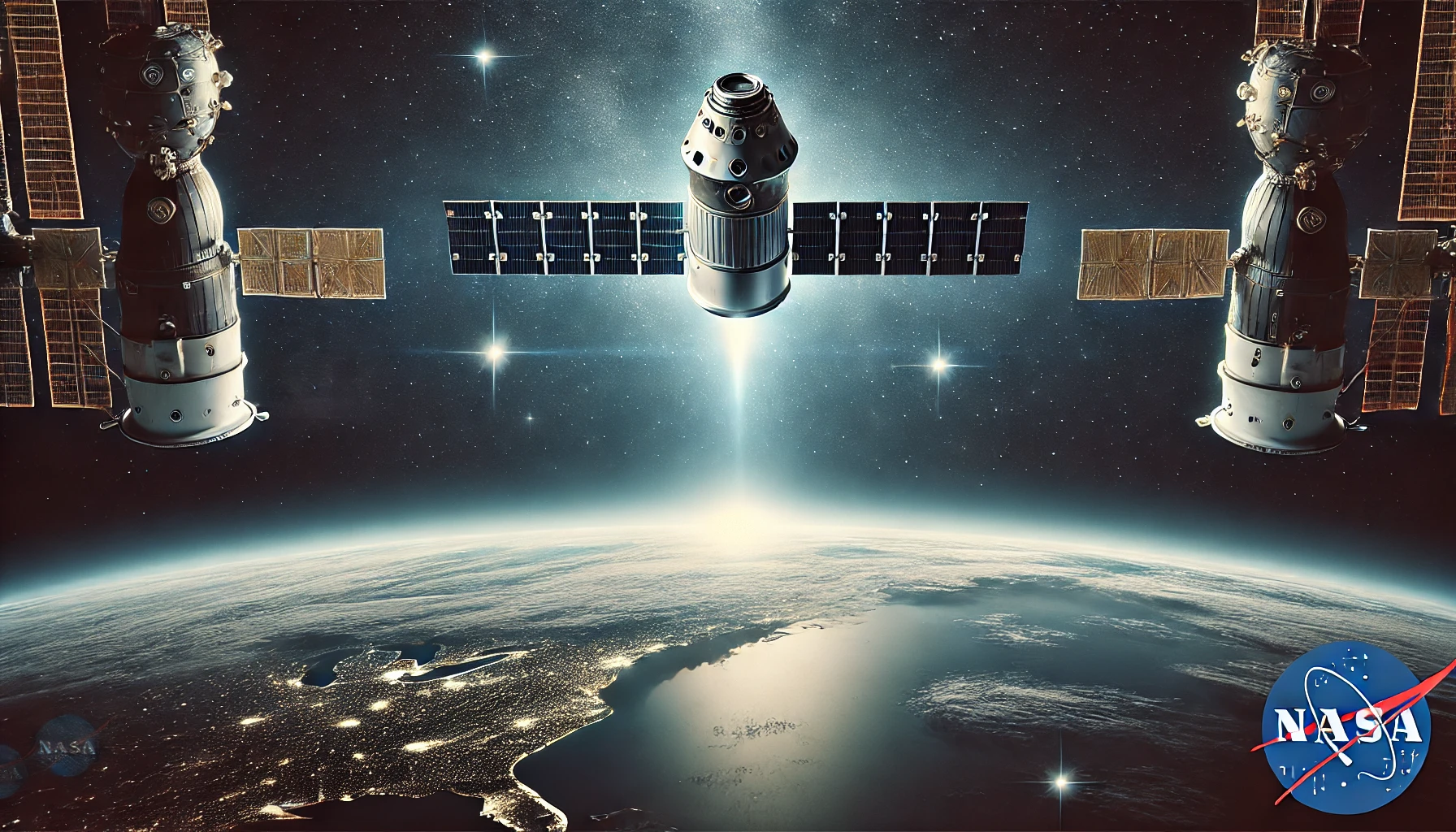SpaceX’s Role in the Future of Commercial Spaceflight: From Falcon 9 to Starlink
Space exploration has entered a new era, driven by the ambitious goals of companies like SpaceX. Founded by Elon Musk, SpaceX has revolutionized the industry with groundbreaking technologies and a vision to make space travel accessible to all. This article explores SpaceX’s significant contributions to commercial spaceflight, focusing on its Falcon 9 rocket, Crew Dragon spacecraft, and Starlink satellite network. Each of these innovations plays a crucial role in shaping the future of space exploration and connectivity.
Falcon 9: The Workhorse of SpaceX’s Fleet
The Falcon 9 rocket has become synonymous with reliability and innovation. As the first orbital class rocket capable of reflight, Falcon 9 has dramatically reduced the cost of space missions, making space more accessible than ever before. The rocket’s design features nine Merlin engines on the first stage and a single Merlin Vacuum engine on the second stage, providing the thrust needed to carry payloads into orbit.
One of Falcon 9’s most remarkable achievements is its ability to land and be reused. This reusability not only cuts costs but also speeds up the turnaround time for launches. Since its debut, Falcon 9 has completed numerous successful missions, including delivering satellites into orbit, resupplying the International Space Station (ISS), and launching SpaceX Crew Dragon missions.
The rocket’s success has positioned SpaceX as a leader in the commercial space industry, paving the way for more ambitious missions like Polaris Dawn and the colonization of Mars.
Crew Dragon: Revolutionizing Human Spaceflight
SpaceX Crew Dragon is a testament to the company’s commitment to advancing human spaceflight. Designed to transport astronauts to and from the ISS, Crew Dragon is equipped with cutting-edge technology to ensure safety, comfort, and efficiency. The spacecraft is capable of carrying up to seven astronauts and can operate autonomously or be manually controlled by the crew.
Crew Dragon’s successful missions, such as Demo-2 and Crew-1, have marked a new chapter in American spaceflight, bringing crewed launches back to U.S. soil after nearly a decade. These missions have demonstrated the spacecraft’s reliability and have cemented SpaceX’s role as a key partner for NASA in human space exploration.
The Polaris Dawn mission, set to utilize Crew Dragon, will push the boundaries of commercial spaceflight even further. With the first-ever commercial spacewalk planned during the mission, Polaris Dawn will be a significant milestone in SpaceX’s journey toward making space more accessible.
Starlink: Connecting the Globe with Satellite Internet
While Falcon 9 and Crew Dragon focus on space exploration, SpaceX Starlink is tackling a different challenge: global internet connectivity. Starlink aims to provide high-speed, low-latency internet access to underserved areas around the world through a constellation of small satellites in low Earth orbit.
To date, SpaceX has launched thousands of Starlink satellites, with plans to deploy tens of thousands more in the coming years. This ambitious project has the potential to bridge the digital divide, bringing reliable internet access to remote and rural areas where traditional infrastructure is lacking.
Starlink’s success also depends on the continued innovation of SpaceX technologies. The frequent launches of Falcon 9 carrying Starlink satellites demonstrate SpaceX’s ability to rapidly deploy and expand this network, further solidifying its role in the future of global communication.
Polaris Dawn: Pioneering Commercial Spacewalks and In-Space Communications
The Polaris Dawn mission is set to be a trailblazer in multiple aspects of space exploration. Not only will it feature the first commercial spacewalk, but it will also test advanced in-space communications using the Starlink network. This mission, led by Jared Isaacman, who previously commanded the Inspiration4 mission, represents a significant step forward in commercial spaceflight.
During the mission, the crew will don specially designed extravehicular activity (EVA) suits developed by SpaceX, which offer enhanced mobility and safety features. These suits will be crucial for the spacewalk, which will take place at an altitude higher than any previous human spacewalk, offering new challenges and opportunities for research.
In addition to the spacewalk, Polaris Dawn will also focus on testing in-space communications via Starlink’s laser-based technology. This will provide valuable data on how to maintain high-bandwidth, low-latency communication between spacecraft and Earth, a critical capability for future missions to the Moon, Mars, and beyond.
Vega Rocket: The End of an Era and Its Legacy
While SpaceX is pushing the boundaries of what’s possible in space, the Vega Rocket is approaching the end of its journey. Developed by the European Space Agency (ESA) and Arianespace, the Vega rocket has been a reliable vehicle for launching small to medium-sized payloads into orbit since its first flight in 2012.
As the Vega rocket nears retirement, it’s worth reflecting on its contributions to space exploration. Vega has been instrumental in launching scientific satellites, Earth observation missions, and more. Its ability to deliver precise orbital insertions has made it a trusted choice for many critical missions.
With the Vega Rocket’s retirement, the space community will look to new launch vehicles to fill the gap. As the industry evolves, the legacy of Vega will remain, serving as a reminder of the progress made in space technology and the ongoing quest to explore the universe.
The Future of Rocket Launches: Scheduling and Coordination
As the demand for space access grows, so too does the need for efficient rocket launch schedules. Companies like SpaceX are leading the charge, with a robust launch cadence that supports both commercial and government missions. Coordinating these launches requires meticulous planning, especially as the number of operational satellites, including those in the Starlink constellation, continues to rise.
The future of space exploration will likely see even more frequent launches, necessitating improvements in launch infrastructure, scheduling, and international cooperation. The retirement of rockets like Vega and the emergence of new vehicles will play a crucial role in shaping this future, ensuring that humanity can continue its journey to the stars.
SpaceX and the Road Ahead
SpaceX has undeniably become a driving force in the modern space race. From the reusable Falcon 9 to the pioneering Polaris Dawn mission, and the global connectivity ambitions of Starlink, SpaceX is shaping the future of space exploration and communication. As we witness the retirement of the Vega Rocket and the continued advancement of commercial spacewalks and in-space communications, it is clear that the next chapter of space exploration will be one of unprecedented innovation and collaboration.
For those interested in diving deeper into the world of space exploration and technology, Regent Studies offers a wealth of resources and educational materials to fuel your curiosity. Additionally, keep an eye on updates from reliable sources like NASA and other space agencies as they continue to push the boundaries of what’s possible in space.




